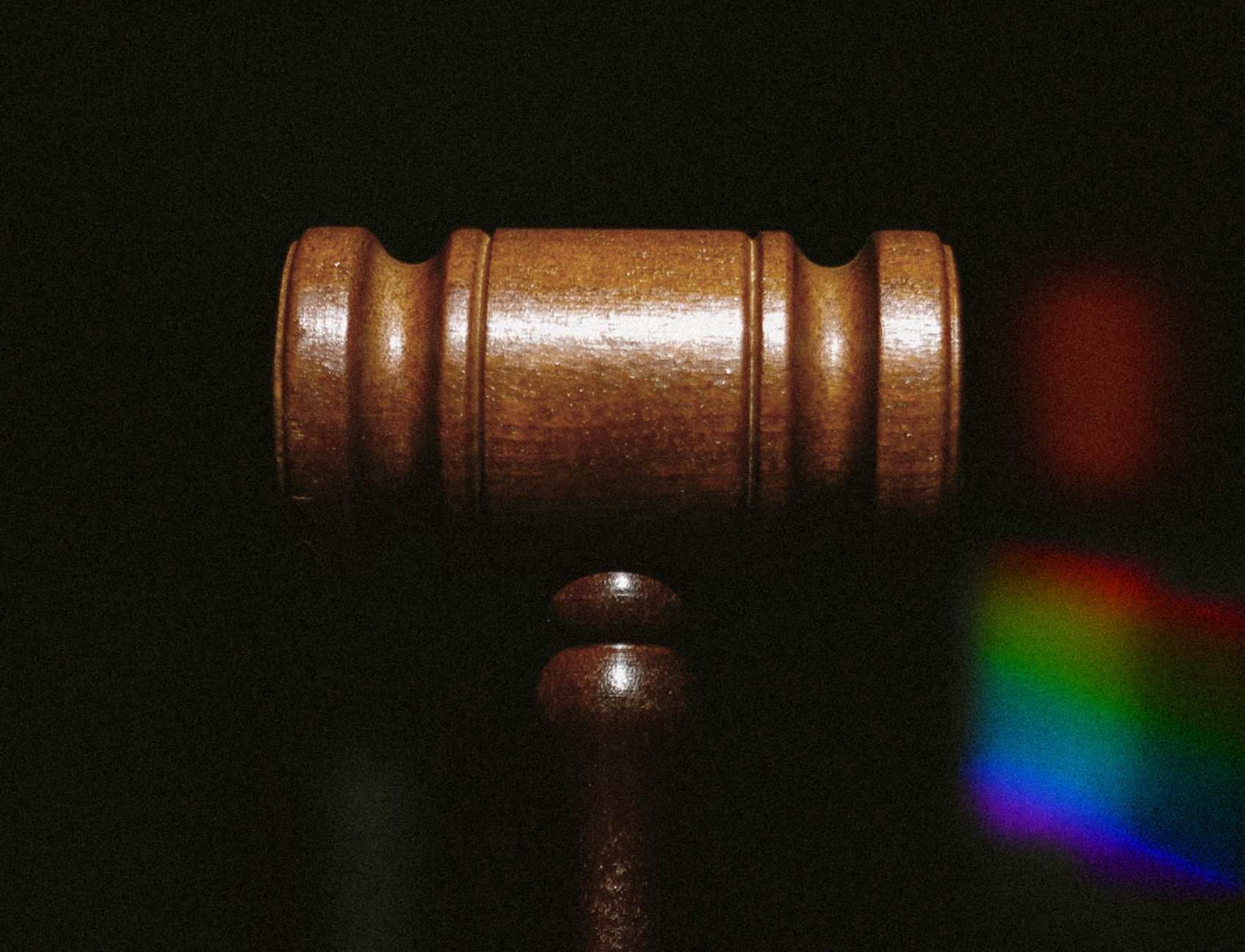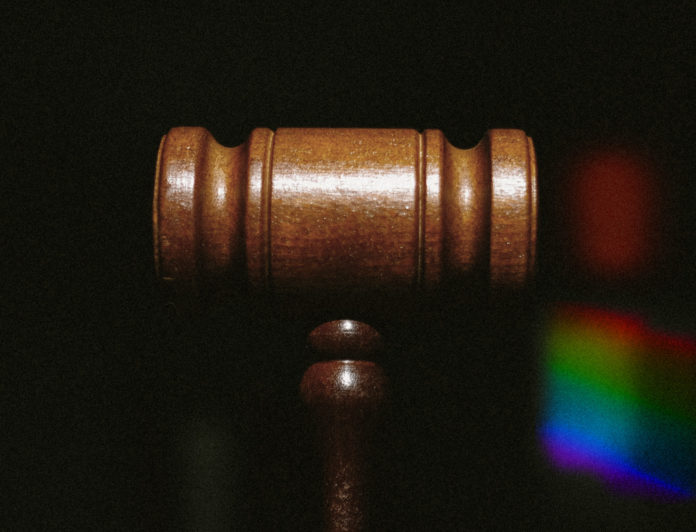
Some states have banned the controversial legal defense, but other efforts, including at the federal level, are facing challenges.
When news broke in July 2020 that Memphis firefighter Mack Bond had been shot to death in his car, his colleagues and community were stunned. Bond, 58, had been with the Memphis Fire Department for 21 years and was remembered as a committed public servant.
“Mack faithfully served as a member of this department for over twenty-one years and was a valued member of our MFD family,” Chief Gina Sweat said in a statement at the time. “He will be greatly missed.”
A couple, Carlton Wells and Danielle Mack, were arrested days later in connection with the shooting, and news reports of the arrest detail a grim motive for the killing. According to a local news report, Wells told police that he shot the firefighter multiple times after Bond allegedly propositioned Wells and his girlfriend for sex, making Wells uncomfortable. The area where Bond was shot was known as a gay cruising area, according to a report in Out Magazine. A grand jury indicted Wells in October 2020 on two charges: second-degree murder and possessing a handgun with a felony conviction. Mack was also indicted on a felony charge of evidence tampering.
Wells’s statement shocked queer activists, who have come to call the claim and others like it the gay and trans panic defenses. And Tennessee is one of dozens of states where defendants are able to make similar statements in court as justifications of their violence against queer people. And while a handful of states have passed laws excluding the defenses from allowable legal arguments, roadblocks still exist, including at the federal level.
The gay and trans panic defenses are not criminal legal defenses on their own, like self-defense, but instead used to argue provocation, diminished capacity, or insanity, as well as self-defense, according to Carsten Andresen, a criminal justice professor at St. Edward’s University in Austin, Texas. In other words, a victim’s sexual orientation or gender identity is argued to have provoked the defendant’s “panic” and thus the sometimes deadly violence inflicted on a queer victim.
“I describe it like carbon monoxide,” Andresen said. “There’s a hazardous byproduct of putting out all these toxic ideas about gay people and other LGBTQ+ people — this idea that they’re predatory. It’s ridiculous.”
Andresen said he has identified more than 200 cases in the last 50 years in which the panic defenses have been used. He estimates, however, that there are hundreds of cases he has not yet found. The Williams Institute at the UCLA School of Law recently found that gay and trans panic defenses have appeared in publicly reported court opinions in roughly half of U.S. states since the 1960s.
The institute compiled a non-exhaustive list of cases that used the defense. Those cases typically centered on unwanted flirtations and sexual advances, or discovery of someone’s trans identity. Arguments that focused on flirtations or advances also relied on stereotypes of queer people, mainly queer men, as a sex-craven predators and claims were often made that the victims were attempting to sexually assault the defendant.
In some cases identified by legal scholars as employing the defense, defendants still received harsh sentences. Jaron Nabors was sentenced to 11 years in prison in 2006 in Alameda County, California, after pleading guilty to voluntary manslaughter in the death of trans teenager Gwen Araujo, who was beaten and buried in a shallow grave by Nabors and three other men after they learned she was transgender. In 2016, James Dixon was sentenced to 12 years in prison in New York City after he pleaded guilty to manslaughter after beating to death Islan Nettles, a trans woman with whom he’d been flirting. In 2018, James Miller of Texas escaped a murder or manslaughter charge, but he was found guilty of criminally negligent homicide and sentenced to six months in jail and 10 years of probation after fatally stabbing Daniel Spencer in 2015. Miller told police that Spencer got angry after Miller rejected sexual advances and became violent.
But as controversial as the defenses are, Andresen’s research shows that they are still somewhat effective. In a sample of 104 cases, he found that murder charges were reduced for people using the defensed 33 percent of the time, resulting in relatively shorter prison sentences. Only a handful of the cases Andresen identified resulted in acquittals.
Andresen and other critics of the gay and trans panic defenses said there is a significant difference between claims of self-defense and crimes that show an obvious anti-queer bias. They point specifically to disproportionate violence inflicted on queer victims that they say belies defendants’ self-defense claims.
“It’s so over the top,” Andresen said. “If you look at somebody that in real life suffered a horrific crime, and then they are lashing out … nobody does it like that.”
In one such case, Joseph Biedermann was acquitted of murder in 2009 in Illinois after he stabbed Terrance Hauser 61 times. Biedermann said he stabbed Hauser after Hauser allegedly drew a sword and threatened to sexually assault him. Rick Garcia, Equality Illinois’ political director at the time, blamed the acquittal on the gay panic defense.
“The gay panic defense is passe but, unfortunately, it still works in some places,” Garcia told the Chicago Tribune. “It seems to me that this jury based its verdict not on the facts but on deep seated anti-gay sentiment.”
Queer people, particularly queer people of color, experience disproportionate violence. An October 2020 study analyzing data from the National Crime Victimization Survey found that queer people are almost four times more likely to be the victims of violent crime than people who identify as straight.
And this year is the deadliest on record for violence against transgender people, according to the Human Rights Campaign. As of Nov. 20, there were 47 homicides of trans people in the U.S., mostly Black or Latino. Last year held the previous record, with 44 known killings. Activists have long said the true number is likely much larger if accounting for unreported deaths and those misreported by police departments, the media, and victims’ own loved ones.
Kristen Browde, co-chairperson of the National Trans Bar Association, said the gay and trans panic defenses particularly impact transgender women because of the disproportionate violence they face. “I find it outrageous that any judge in any court would for a moment tolerate the thought that all people are not equal, that all lives are not of the same value,” Browde said. “And that is what [the gay and trans panic defense] is saying. When you allow a defense like that, somehow one person’s life is worth less than another’s because that person is transgender.”
In the face of deadly violence against trans people, some legislators have made efforts, with varying success, to ban the gay and trans panic defenses in courtrooms across the country.
In 2013, the American Bar Association unanimously approved a resolution that called on state legislatures to ban the defenses, and the following year, California became the first state to do so. Virginia, Vermont, Oregon, and Maryland enacted a ban on the defenses this year, bringing the total number of states to ban the defense to 15, along with the District of Columbia.
Maryland Senator Clarence Lam, a Democrat who sponsored his state Senate’s version of the bill, told The Appeal that he was surprised at how quickly the measure passed.
“I was under the impression that it’d take more than one session to get this done and I was pleasantly surprised it passed in one full legislative session,” Lam said. The bill was introduced before the COVID-19 pandemic, but a shortened legislative session left the bill on the floor. It was reintroduced last year and passed unanimously in both the state House and Senate.
“I think it speaks to where society is these days in recognizing LGBTQ+ rights and recognizing that these are regular people just like everyone else,” Lam said.
Among legal scholars, however, views about the legitimacy and legality of the defense vary.
In a 2008 paper about the defense, George Washington University Law School professor Cynthia Lee wrote that legislative bans were misguided because courtroom arguments and education about LGBTQ+ issues were more apt to counter the problematic defenses. But in a 2020 research paper revisiting trans panic defenses, Lee wrote that she has since changed her mind, believing the bans to be an important and effective tool.
“All the education in the world will not encourage an individual who is explicitly biased against transgender individuals to see the victim in a trans panic case as an ordinary human being who did nothing to provoke the defendant other than being a transgender person,” Lee wrote in the paper.
Some, including Andresen, the St. Edward’s University professor, have voiced concerns that the bans could be overturned through lawsuits accusing them of violating defendants’ due process rights. But in her 2020 paper, Lee argued that under the current U.S. Supreme Court precedent, the bans would be constitutional.
“It is unlikely that the Supreme Court would find that a legislative ban on the trans panic defense violates a defendant’s due process rights,” Lee wrote.
But not all efforts to ban the defenses at trial have been successful. “Sadly, there are many, many states where bills to do away with this excuse for violence have been introduced but those bills are languishing,” said D’Arcy Kemnitz, executive director of the National LGBT Bar Association. “And it makes me so upset to have to say this, but I have seen it time after time — those bills often will become law only after someone gets hurt or killed.”
In Texas, for instance, a bill to ban the defenses, introduced by state Representative Gina Hinojosa in November 2020, failed to make it out of committee.
Hinojosa, a Democrat who represents parts of Austin, expressed disappointment that the bill failed along party lines after a Republican colleague backed out of an agreement to support it. She says she intends to reintroduce the bill, however, or pass it on to a colleague to sponsor.
“I do think that my Republican colleagues were open and I think some may have even been convinced, but because LGBTQ+ issues have become so polarized … they didn’t think they were free to vote in support of the bill without facing political repercussions in a Republican primary,” she said in a phone call.
Hinojosa said a nonbinary constituent brought the issue to her attention and motivated her to take it up. She believes the ban is a crucial way to ensure equity within courtrooms across the state.
“This is a basic justice issue,” Hinojosa said, “and until we’re able to remedy the law, members of our LGBTQ+ community will be less safe, and less protected by our state laws.”
State legislatures across the country have also tried to limit the rights of transgender and other queer people. Texas legislators in particular have introduced 47 bills this year — three times more than any other state — targeting trans youth in sports, gender-affirming care, and birth certificate updates, according to reporting by The 19th.
Scholars like Browde of the Trans Bar Association say similar gridlocks in Congress could also doom a bill to abolish the defenses in federal courts. In April, U.S. Senator Ed Markey of Massachusetts and Representative Chris Pappas of New Hampshire, both Democrats, introduced the Gay and Trans Panic Defense Prohibition Act. Markey is focused on building support for the bill as it moves through the House Judiciary Committee, said his press secretary, Taylor St. Germain.
“It’s common sense legislation that has support across the country,” St. Germain said in a phone call. “Senator Markey is of the belief that these so-called defenses only exacerbate bigotry facing people and take away the legitimacy of the federal prosecution.”
Support The Appeal
If you valued this article, please help us produce more journalism like this by .








